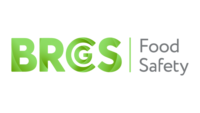Sponsored Content
Non-Conformances & Trends in BRCGS Food Safety Issue 9: Lessons Learnt Over the Past Year

“Food safety is an ongoing journey of continuous improvements, with no finish line,” are the words of Michael R. Taylor, the former Deputy Commissioner for Foods and Veterinary Medicine at the U.S. Food and Drug Administration (FDA). Aligning with this principle, the National Science Foundation (NSF) conducted an event providing key insight into BRCGS Global Standard Food Safety Issue 9 compliance.
The event discussed how after a year of launching the BRCGS Global Standard Food Safety Issue 9, the transition audit data collected over this period was analyzed to comprehend the common non-conformities and trends, and how sites can overcome these challenges in future audits. Let’s delve into these aspects to gain a better understanding of the same.
Background on BRCGS Global Standard Food Safety Issue 9
On August 1st, 2022 the BRCGS released Issue 9 of its Food Safety Standard following a thorough procedure initiated in May 2021, incorporating the latest trends and industry requirements. Compliance evaluations based on the updated standard were declared obligatory from February 1st, 2023. Following are the key changes to the requirements for Issue 9 compared to Issue 8:
Section 1 emphasizes the importance of senior management's commitment to fostering a culture of food safety and quality within a company. The focus is on promoting behavioral changes among employees to improve product safety awareness and compliance. This includes implementing clear plans for maintaining and enhancing food safety and quality culture, which involve activities like communication, training, feedback mechanisms, and performance measurement. These plans must be reviewed and updated annually.
Section 2 discusses the integration of HACCP principles from the Codex Alimentarius into the standard. It highlights the importance of validating prerequisite programs for controlling specific hazards and implementing verification procedures for changes in HACCP or food safety plans.
Section 3 addresses internal audits, emphasizing their role in management reviews and the need for a consistent approach to root cause analysis for corrective and preventive actions. It also introduces new requirements for managing outsourced processes.
Section 4 covers site standards, including food defense measures, hygiene practices related to equipment, and considerations for purchasing, installing, and maintaining equipment to ensure hygienic production.
Section 5 introduces new requirements for validating product claims on labels and updates the clauses related to product inspection and testing. It also includes specific controls for animal primary conversion processes.
Section 6.1 introduces a new clause to ensure that by-products outside the audit scope do not compromise product safety.
Section 7.4 emphasizes the need to validate the effectiveness of cleaning rather than just testing it.
Section 8 outlines requirements for production risk zones, including new provisions for removable walls and the use of Clean-in-Place (CIP) equipment.
Section 9 introduces requirements for traded products, emphasizing the need for procedures to ensure product safety and compliance with legal requirements, even for products not manufactured on-site. This section remains voluntary, with a new subsection on integrating traded products into existing HACCP plans.
Key Non-Conformances Observed & What Should Be Done?
One year's worth of data regarding the implementation of BRCGS Global Standard Food Safety Issue 9 has been collected and introspected through 23000+ certificate sites, employed across more than 125 countries. This led to the reporting and correction of more than 145000 non-conformance incidents, each representing an opportunity for improvement.
Below are the clauses against which top non-conformities have been found.
1.1.10 Where the site is certificated to the Standard, it shall ensure that announced or blended recertification audits occur on or before the audit due date indicated on the certificate.
The primary factor contributing to the elevated non-conformance rates concerning clause 1.1.10 appears to be the tardiness in paperwork submission. This results in a time gap between submission and the audit deadline or certification expiry, often leading to expiration before the subsequent audit can occur at the site. This delay may stem from sites adapting to new unannounced requirements while participating in announced programs. To mitigate this issue, sites are advised to submit their paperwork sufficiently in advance to preempt delays beyond their control, such as auditor availability.
Recommended Actions
The site bears the responsibility of arranging the recertification audit before the deadline. It is crucial that all parties involved, particularly the administrative team, are cognizant of this deadline. Maintaining documentation of the paperwork submitted and the actions taken to coordinate the audit could serve as valuable evidence in case of any inquiries.
4.11.1 The premises and equipment shall be maintained in a clean and hygienic condition.
This minor non-conformity centers around maintaining cleanliness and hygiene, echoing a pattern seen in the BRCGS Standards for Packaging Materials and Storage and Distribution. Hygiene emerges as a prevalent issue across various aspects of operations. Moreover, there is a discernible pattern wherein non-conformities regarding hygiene are evenly split between equipment and premises. This suggests a widespread challenge in maintaining hygiene standards across the board rather than being confined to one specific area. This issue occurs as a result of the following elements:
- Escalating production requirements
- Shortage of staff
- Neglect of non-production areas
- Oversight of inaccessible spots
- Complacency regarding basic hygiene practices
- An uptick in unannounced audits catching sites off guard amidst their routine activities.
These factors collectively contribute to the observed trends, highlighting the need for heightened attention to hygiene practices across industrial sites.
Recommended Actions
The clauses within the BRCGS standard typically interact with each other, implying that success or failure in one area will likely affect other operational aspects noticeably. Keeping this interconnectedness in mind, it is advisable to leverage guidance from other clauses when addressing the requirements of Clause 4.11.1:
1.1.2: The site’s senior management shall define and maintain a clear plan for the development and continuing improvement of a good safety and quality culture.
4.11.2: The frequency of methods of cleaning shall be based on risk.
4.11.4: Cleaning staff shall be adequately trained.
3.4.4: There shall be a separate program of document inspections to ensure that the factory environment and processing equipment are maintained in a suitable condition for food production.
By adhering to these guidelines, the following action points can be established:
- Cultivate a positive culture starting from top management. The Hygiene Team should be given a voice in important decisions.
- Prioritize risk assessment in site management. Every new equipment or process should be evaluated for associated risks, with strategies devised to mitigate them effectively.
- Ensure continuous and relevant training for all staff members.
- Conduct regular site inspections, as recommended either monthly or based on a risk-assessment schedule.
Making use of the BRCGS Interpretation Guideline is an appropriate approach to undertake to optimize hygiene procedures, as this resource contains proper guidance relating to the development of an effective cleaning procedure.
4.9.1.1 Processes shall be in place to manage the use, storage, and handling of non-food chemicals to prevent chemical contamination.
The wording of this clause has remained almost unchanged since Issue 8. However, two new examples have been included in the list of processes that must be established:
- Protocols for managing spills
- Procedures for the safe and lawful disposal or return of outdated chemicals and empty chemical containers
The non-conformities in this domain pertain to:
- Failure to keep chemical storage doors locked
- Unauthorized personnel accessing areas where chemicals are stored
- Inadequate training of personnel handling chemicals
- Insufficient labeling of non-food chemicals
- Improper or inadequate storage practices
- Difficulties faced by sites in understanding proper disposal methods for empty chemical containers
Recommended Actions
To address this issue, the initial step is to refer to the Material Safety Data Sheets (MSDS) accompanying non-food chemicals delivered to the site. These sheets provide significant guidance on proper chemical storage and container disposal methods. Furthermore, reaching out to suppliers directly for training resources or storage and labeling recommendations can be beneficial. Contacting local authorities can provide insights into container disposal regulations and potential issues. Incorporating this aspect into regular hygiene checks can help prevent oversight. Similarly, conducting a root cause analysis is advisable if internal inspections reveal unresolved issues.
4.6.2 The design and construction of equipment shall be based on risk, to prevent product contamination.
Understanding Clause 4.6.2 is vital as it emerges as the sole new requirement among the top five minor non-conformities. It is typical for clauses with substantial changes to become common non-conformities. Determining if this persists as a concern or just initial adjustments depends on forthcoming data.
Typical non-conformities involve rust, flaking paint, broken parts, and unsuitable welds and joints. Preventing these involves focusing on equipment design and construction based on risk to prevent product contamination.
Recommended Actions
To avoid this non-conformity, the following actions can be taken:
- Prioritize equipment directly in contact with food, ensuring no trap points, harborage, or foreign body risks exist.
- Use smooth, non-porous materials and ensure suitability and ease of cleaning.
- Schedule regular equipment inspections and promote maintenance vigilance among operatives to minimize the risk of auditors spotting damage.
- Recognize that auditors inspect only a sample of equipment, focusing on factory processes.
- Involve your HACCP team in evaluating equipment introduction and maintenance processes.
- Consider incorporating equipment design and construction evaluations into hygiene and housekeeping inspections as per Clause 3.4.4, facilitating easier monitoring of this critical aspect of your operation.
4.4.8 Doors (both internal and external) shall be maintained in good condition.
Despite serving as a clear indicator of a site's standards, doors present an ongoing challenge in meeting audit compliance. As the primary means of access and an external barrier to the external environment, this aspect is notably overlooked. The doors at your factory should adhere to the following criteria: they must be close-fitting, impervious to pests, well-maintained, in optimal working condition, and closed during production activities. However, audits conducted since February 2023 have revealed a troubling trend wherein a significant number of doors:
- Show signs of damage
- Lack proper sealing
- Require maintenance that has not been carried out
- Remain open during production hours
Recommended Actions
If you harbor concerns regarding the state of the doors on your premises, it is imperative that you:
- Promptly address any necessary repairs. Initiate discussions with your maintenance team to establish a plan of action.
- Consider implementing a Wireless Monitoring System, which can automatically monitor door activity and send alerts in case of any incidents.
- Recognize the importance of preventative maintenance. Rather than waiting for issues to arise, your maintenance team should proactively safeguard the integrity of the doors from the outset. Incorporate this aspect into routine hygiene and housekeeping inspections.
- It is advisable to rotate inspectors from various departments to ensure a fresh perspective during each inspection.
4.4.1 Walls shall be finished and maintained to prevent the accumulation of dirt, minimize condensation and mold growth, and facilitate cleaning.
The prominence of your site's walls rivals that of its doors, making them impossible to ignore. However, numerous sites are grappling with this issue, as evidenced by non-conformities in both Issues 8 and 9 of the BRCGS Global Food Safety Standard.
Recommended Actions
To address this, it is required to assess the design of the walls themselves to prevent non-compliance. The materials and structure must meet hygienic standards and be suitable for the operational demands of a factory. Regular inspections are essential to detect any damage or deterioration promptly. Moreover, careful consideration must be given to what is affixed to the walls, as many sites fall short in this regard. Whether it's shelves, shadow boards, signage, or PPE dispensers, these fixtures must adhere to hygienic standards and undergo routine inspection.
Collaboration with the Hygiene Team is paramount. They are responsible for cleaning these wall-mounted items and should be made aware of hard-to-reach areas behind them. These spaces are prone to harboring pests, condensation, and mold, posing risks that must be addressed proactively by your team before they are flagged by auditors.
Conclusion
Given below is a brief overall takeaway that can be drawn from the information gathered on non-compliance in the implementation of BRCGS Global Standard Food Safety Issue 9.
Key Trends
- The pattern of non-conformances noted seems to be predominantly related to basic procedures.
- Hygiene continues to be a key area of non-conformances despite clause 4.11.1 having no change from V8 to V9.
- Short-termism (thinking about budget rather than hygienic design, or meeting a customer deadline at the expense of good equipment choice).
Way Forward
- Getting the basics right is what underscores the foundational principles that are important for success in food safety.
- Teams in a food enterprise need to be trained to identify and manage risk.
- By focusing on key aspects where the non-conformities are concentrated such as chemical management, facility maintenance, etc., sites can establish a solid framework, not only for meeting the requirements of the standard but also for creating a culture of excellence and safety in food production.
- Effective corrective action reporting and root cause analysis, preventative maintenance, and prerequisites should be mainstreamed as they are very integral to what is happening on the site.
Stay Compliant to BRCGS Food Safety Issue 9 with Smart Food Safe
Smart Food Safe presents a one-stop optimal solution tailored to meet BRCGS Food Safety Issue 9 standards and stay away from non-compliance. Through our pioneering tech-enabled features in software modules such as Smart Record, Smart Doc, Smart EMP, Smart Audit, Smart CAPA, Smart Training, and many more, we equip businesses with the tools necessary to uphold the discipline in conducting basic protocols critical for achieving food safety excellence.
By integrating Smart Food Safe into their operations, food industries can establish a resilient compliance framework, fostering a culture deeply rooted in preventive food safety management. Offering a cost-effective platform, we deliver tangible returns on investment, empowering food enterprises to streamline operations, enhance product quality, and ensure conformance with BRCGS Food Safety Issue 9, all while maintaining real-time traceability and digital transparency.
Looking for a reprint of this article?
From high-res PDFs to custom plaques, order your copy today!





